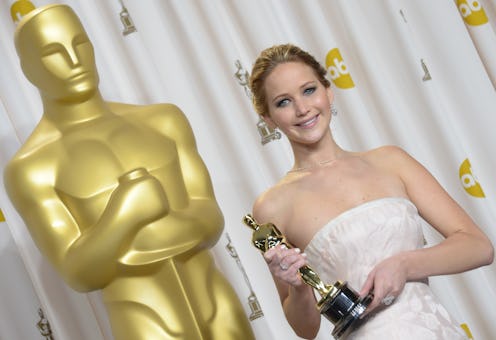Entertainment
New Study Exposes More Major Film Gender Gaps
Are you looking for a depressing statistic to add to your day? Try this one — according to a new study from the Center for the Study of Women in Television and Film at San Diego State University, women only made up 12 percent of the protagonists in the top-grossing movies of 2014. So, basically, if 100 big movies came out this year, only 12 of them featured a female protagonist. 12. Those numbers truly suck. Even sadder? We probably didn't even notice, considering that this year was chock-full of what critics and fans considered feminist blockbuster flicks like The Hunger Games: Mockingjay Part I, Maleficent, The Fault in Our Stars and Divergent.
No one is denying the importance of these female-led films or the stories that they present. Unfortunately, these films are just a tiny portion of the films that came out this year — and the fact that they got plenty of buzz for having a female lead actually tricked audiences into thinking that things are getting better for women at the movies. That's not even to mention that some of the films that fall within this 12 percent margin don't actually do great things for women — let's not forget that the Twilight franchise has a female lead.
Here's some more alarming stats: In secondary roles, female characters are typically less well-defined than their male counterparts and only comprise a pathetic 30 percent of speaking parts. They're also far younger — can you think of a film where an older male actor was matched with a woman roughly his age without it being significant to the story of the film? I can't think of one, though I can name movies that feature much older male actors with incredibly young women. Here's just one example: the upcoming Will Smith film Focus has a 24-year-old Margot Robbie as the love interest for a 46-year-old Will Smith.
We need to start treating women better onscreen, and one of the best ways to do that is to put them behind the camera as well. We need more women telling stories of women, whether as writers, producers, or directors. As center director Dr. Martha Lauzen points out, when women were behind the camera in 2014, 39 percent of their films had female leads — as opposed to male directors, who included women only four percent of the time.
As we saw from hits like the latest installment of the Hunger Games franchise and Maleficent, people will turn out to see women take the lead. Hollywood needs to start giving ladies more power — both on the screen and off.
Image: Giphy
